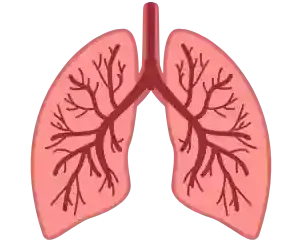Track your lung health with the A to B Breathing Test. Improve your respiratory performance with this easy and reliable lung function assessment tool.
Disclaimer: Do not use this test if you have breathing problems such as asthma and the flu. Also, if you drink alcohol or smoke in everyday life, please consult a medical professional.
Lungs Test Online
Test your lungs with this online inspection tool
Hold your breath to measure your lung capacity
Timer
Leaderboard
| # | Time (s) |
|---|
What is the A to B Breathing Test?
The A to B Breathing Test is a simple exercise designed to help individuals assess their breathing efficiency. It focuses on the time taken to transition from one breath (A) to another (B) while maintaining a steady rhythm and proper posture. This test can be useful for those looking to improve their respiratory habits, manage stress, or enhance physical performance.
How does the A to B Breathing Test work?
The test involves counting how many seconds it takes to transition smoothly from an inhale (A) to an exhale (B). Participants are encouraged to sit or lie down comfortably, ensure a relaxed posture, and breathe naturally. The results can provide insight into the rhythm and efficiency of their breathing patterns.
Who can use the A to B Breathing Test?
Anyone interested in understanding their breathing habits can use the A to B Breathing Test. This includes athletes aiming to optimize performance, individuals managing stress or anxiety, and those practicing mindfulness or meditation techniques. It’s a simple and non-invasive way to assess breathing quality.
Why is proper breathing important?
Proper breathing is essential for maintaining overall health and well-being. It supports optimal oxygen delivery to the body’s tissues, regulates stress responses, and enhances physical and mental performance. Inefficient breathing can lead to fatigue, reduced focus, and increased stress levels.
What are the benefits of the A to B Breathing Test?
Self-awareness: Helps you become aware of your natural breathing patterns.
Stress management: Identifies areas where breathing might be shallow or irregular, allowing you to address these issues.
Performance improvement: Offers insights for athletes or performers to enhance stamina and focus.
Mindfulness: Encourages a moment of stillness and introspection.
Can children use the A to B Breathing Test?
Yes, children can use the A to B Breathing Test as long as they can follow simple instructions. It’s a great way to teach kids the importance of proper breathing and help them manage stress or enhance concentration.
How often should I perform the A to B Breathing Test?
The frequency depends on your goals. For general awareness, performing the test once a week can be sufficient. If you’re working on improving your breathing efficiency, consider testing daily or a few times a week to track progress.
What should I do if I find my breathing irregular during the test?
Irregular breathing patterns are common and can result from stress, poor posture, or shallow breathing habits. If you notice irregularities, focus on:
Practicing diaphragmatic breathing.
Engaging in mindfulness exercises.
Improving posture during the day.
Consulting a breathing specialist for tailored guidance if needed.
Does the A to B Breathing Test require any special equipment?
No special equipment is needed for the A to B Breathing Test. You simply need a quiet space, a timer (optional), and a comfortable position to perform the test.
Can the test help with anxiety?
The A to B Breathing Test can help manage anxiety by promoting awareness of breathing patterns and encouraging relaxation. By identifying irregular or shallow breathing, participants can work on techniques to calm their respiratory system and reduce anxiety levels.
Is this test useful for athletes?
Yes, athletes can use the A to B Breathing Test to analyze their respiratory efficiency. It can provide valuable feedback for enhancing stamina, endurance, and overall performance during physical activities.
How long does the A to B Breathing Test take?
The test is quick and typically takes only a few minutes. It’s designed to be simple and easy to incorporate into your daily routine without requiring significant time or effort.
What are common mistakes to avoid during the test?
Holding your breath: This can skew the results and doesn’t reflect natural breathing patterns.
Poor posture: Slouching or hunching can restrict airflow and lead to inaccurate results.
Forcing breaths: Breathe naturally and avoid overexerting yourself.
Can the test be performed lying down?
Yes, the A to B Breathing Test can be performed while lying down or sitting comfortably. Choose a position that allows you to relax and breathe naturally.
How can I track my progress over time?
Keep a journal or log to record your test results, noting the time it takes to transition between breaths and any changes in comfort or ease. Regular tracking can help you identify improvements or areas needing attention.
